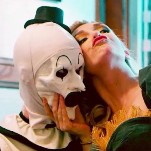The Story Behind the Woman Who Made WWI Masks Just Like Doctor Poison Wears
In DepthFew women would have worn masks like the otherwise historically accurate one sported by Wonder Woman villain Doctor Poison. However, many of them were created by a woman—an American sculptor named Anna Coleman Ladd.
Of all the horrors wrought by World War I, devastating facial injuries were among the most traumatic, for the culture broadly but especially for the sufferers. Newly developed machine guns sprayed bullets at soldiers in trenches, perfectly positioned to be struck in the face. Allison Meier explains in a Hyperallergic article from 2016:
-

-

-

-

-

-

-

-

-

-

-

-

-

-

-

-

-

-

-

-

-

-

-

-

-

-

-

-

-

-

-

-

-

-

-

-

-

-

-

-








































